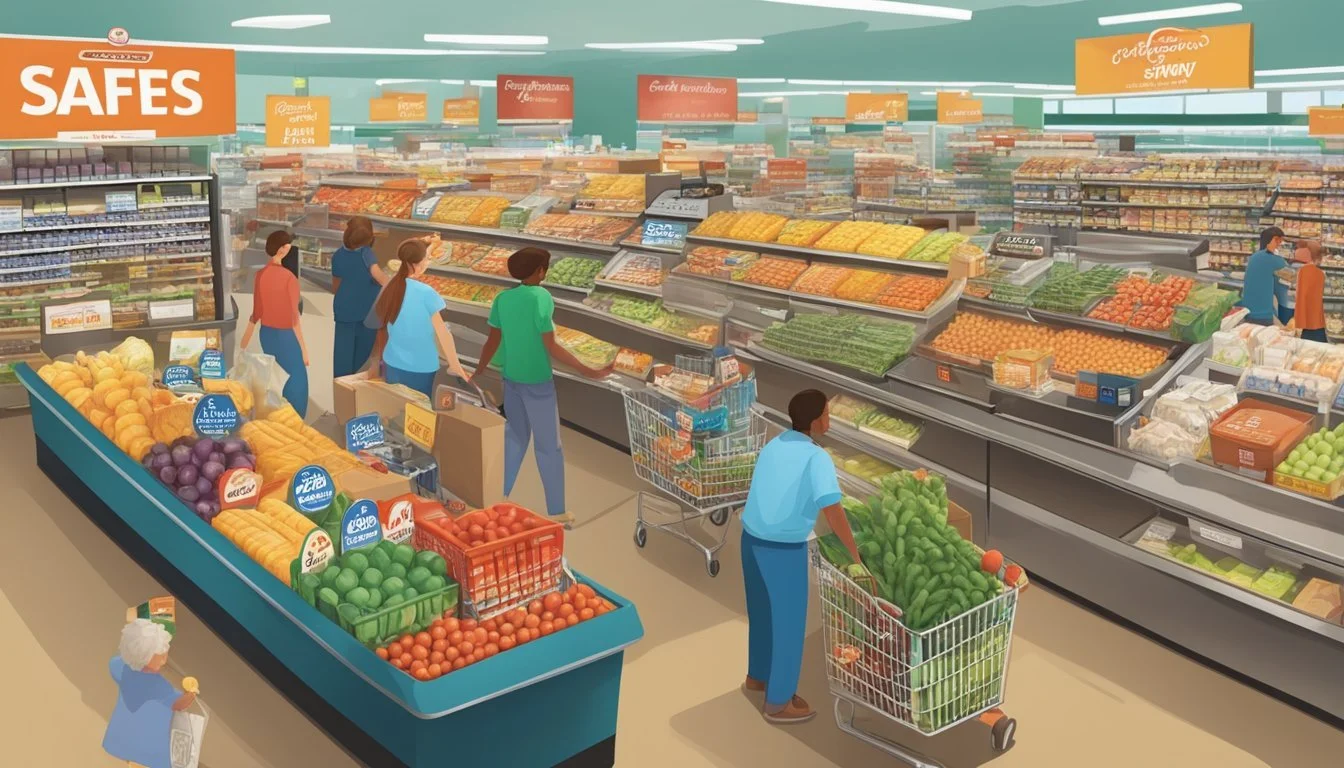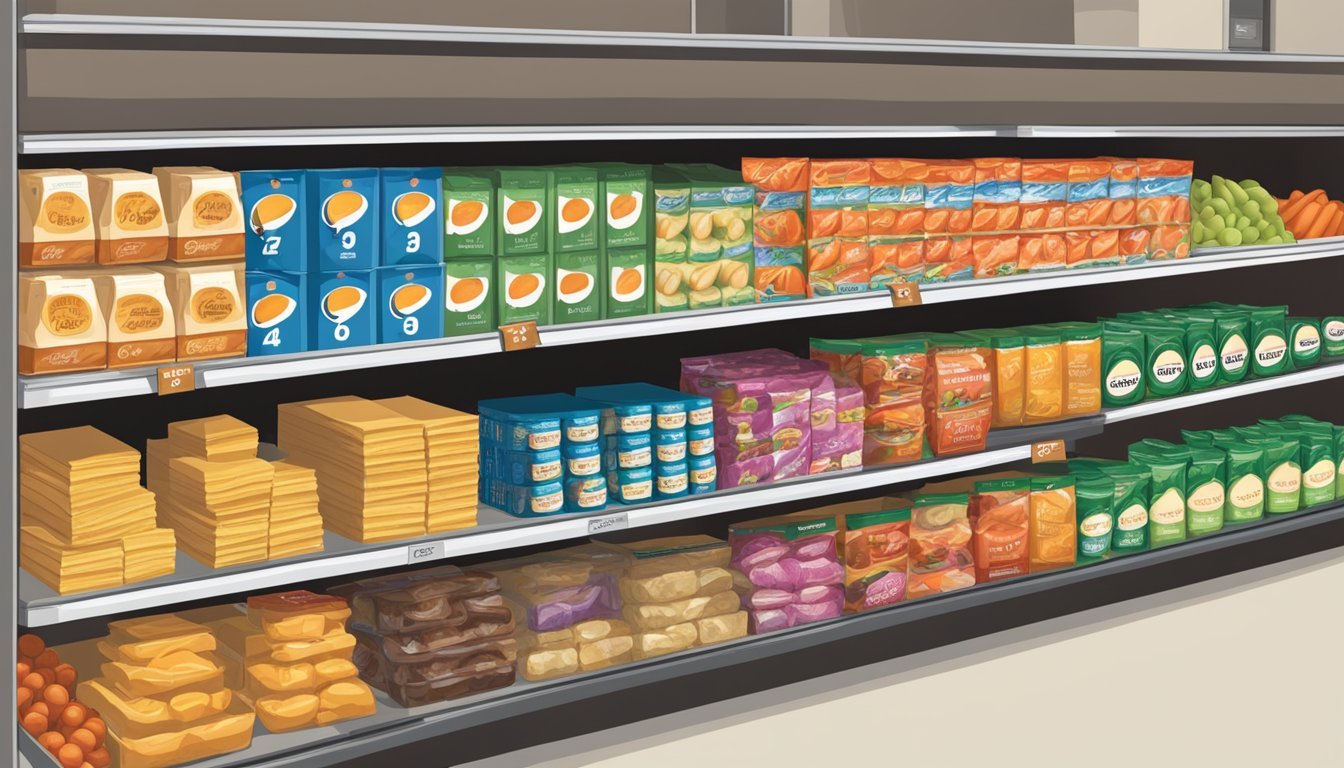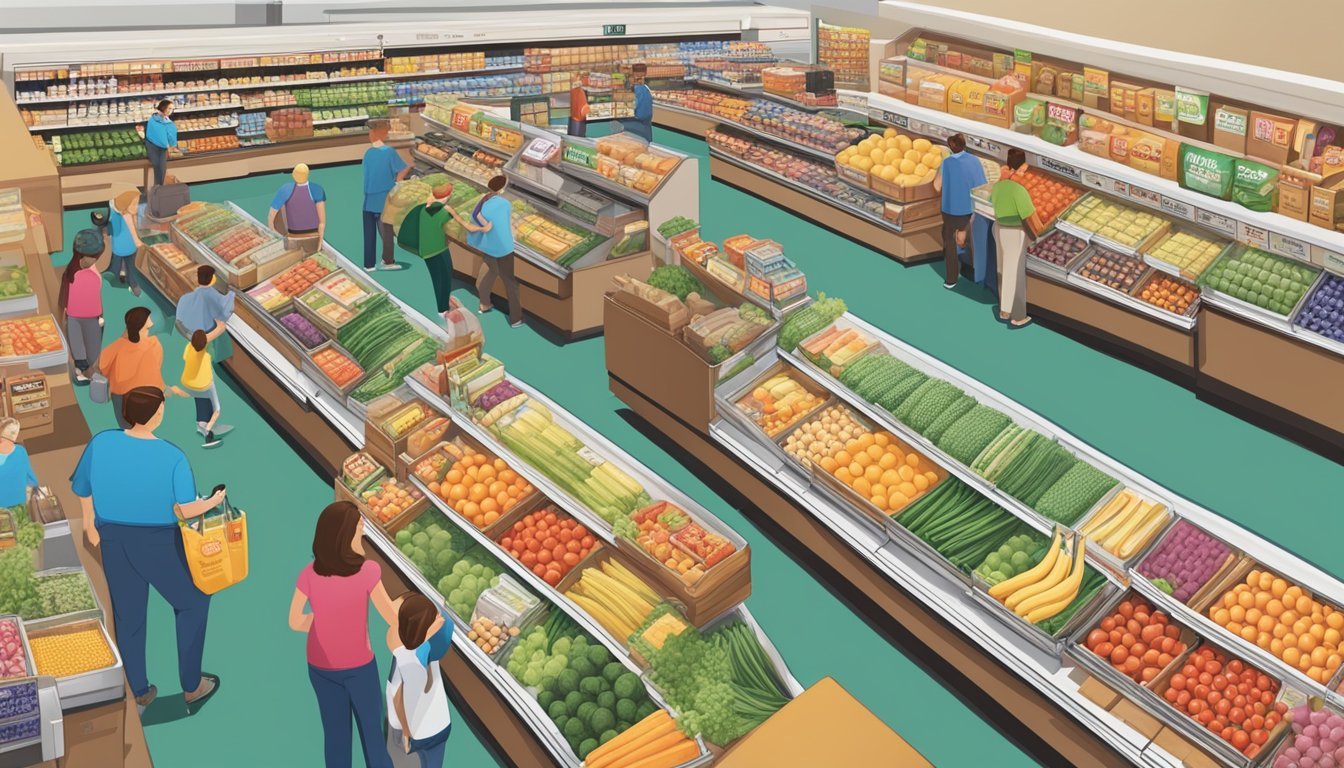Is Safeway Cheaper Than Ralphs?
Comparing Grocery Prices and Deals
Part of Our Grocery Store Guide with Details on Safeway Prices and Ralphs Prices
When navigating the grocery store landscape, cost-conscious shoppers often compare prices between popular chains to maximize their savings. Specifically, in the debate on whether Safeway is cheaper than Ralphs, several variables come into play, including the geographical location, the range of products, and the frequency and type of sales both stores offer. Safeway and Ralphs are established supermarkets in the United States, each with a strong regional presence and a reputation for offering a full range of grocery items.
The pricing at Safeway and Ralphs can vary based on the promotions each store runs, their discount programs, and the value of their store-brand products. While both chains strive to provide value to their customers, the comparison of their prices is not always straightforward. It depends on a shopper's individual purchasing habits, the types of items bought, and the benefits one may derive from loyalty programs.
Further complicating the comparison, Safeway and Ralphs each have their own brand lines which can be more affordably priced than national brands, potentially offering more savings. Additionally, while some shoppers may focus purely on the sticker price, others might consider the shopping experience, store location, product quality, and customer service as factors in defining value. These considerations make the answer to whether Safeway is cheaper than Ralphs a nuanced subject, suitable for a detailed exploration rather than a simple yes-or-no response.
Comparing Safeway and Ralphs
In the landscape of American supermarkets, Safeway and Ralphs stand as prominent players. This section seeks to demystify the differences between the two in terms of their history, presence, and product offerings.
Historical Overview
Safeway, with roots dating back to 1915, has established itself as one of the oldest and most widespread supermarket chains in the United States. Over time, it has garnered a reputation for a wide selection of products and customer service. Ralphs, a subsidiary of Kroger, began in 1873 and is recognized as the oldest grocery store chain in the West Coast, maintaining a significant presence in Southern California.
Store Locations
As of the most recent data, Safeway operates over 900 locations across 17 states, predominantly in the Western and Central regions of the U.S. Ralphs, on the other hand, has a stronger geographic concentration, with its stores primarily located in Southern California, making it a familiar name in that locale.
Range of Products
Both supermarkets offer a comprehensive range of products from fresh produce, meat, and dairy, to bakery items and pantry staples. Safeway is noted for its private label brands, such as Signature Select and O Organics. Ralphs leverages its connection to the Kroger network, which allows for an extensive variety of brands and goods, including its exclusive Kroger-brand products.
Price Analysis
This section offers a detailed examination of prices, discounts, and loyalty programs at Safeway compared to Ralphs, providing shoppers with information to make cost-effective decisions.
Average Price Comparison
When assessing the average price differences between Safeway and Ralphs, several factors come into play. Most notably, the base prices of goods often fluctuate based on location, sales, and available brands. Ralphs typically positions itself with a pricing strategy that appeals to budget-conscious consumers, and data suggests that in a head-to-head comparison, Ralphs may edge out with slightly lower base prices.
Discounts and Savings
Discounts play a significant role in the final prices consumers pay. Ralphs has been observed offering weekly sales that can significantly reduce the cost of groceries. Safeway, while sometimes priced higher, also provides notable savings through occasional discounts. Shoppers should actively check weekly flyers and in-store promotions to take advantage of these offers.
Loyalty Programs
Both Safeway and Ralphs offer loyalty programs; Safeway has the Just for U program, and Ralphs features the Kroger Plus Card. These programs are designed to offer savings, deals, and sometimes, personalized discounts. While the savings through these programs are dependent on individual shopping habits, they consistently deliver value to regular customers. Safeway's Just for U program is known for offering substantial discounts on a variety of products, while Ralphs' loyalty program provides not only discounts but also fuel points which can be used for savings on gas purchases.
Product Selection
When comparing Safeway to Ralphs in terms of product selection, customers will notice distinct differences in produce quality, meat selection, and the range of organic and store brands each retailer offers.
Produce Quality
Safeway and Ralphs both offer a variety of fresh produce, catering to the typical shopper's needs. Safeway is often perceived as having a marginally higher price point, which can reflect in the quality and presentation of their fruits and vegetables. Ralphs, while competitive in quality, may have more frequent sales, making it a more cost-effective choice for shoppers focusing on price as well as quality.
Safeway: Consistently fresh; higher price
Ralphs: Quality varies; more sales and discounts
Meat Selection
The meat selection at Safeway and Ralphs varies, with both chains providing a range of beef, poultry, and seafood options. Ralphs is known for competitive pricing, especially for common cuts of meat. In contrast, Safeway might offer a wider selection of premium cuts, but typically at a higher price point.
Safeway: Premium cuts available; generally more expensive
Ralphs: Lower prices; good variety
Organic and Store Brands
Organic produce and store brands have become staples in grocery stores. Both Safeway and Ralphs have their own store brands, which are usually more affordable than national brands. Safeway carries the O Organics line, which is exclusively organic. Ralphs offers the Simple Truth brand, which includes both organic and non-organic products, often at lower prices when compared to equivalent items at Safeway.
Safeway: O Organics; higher price range
Ralphs: Simple Truth; generally more affordable
Shopping Experience
When comparing the shopping experience between Safeway and Ralphs, customers are typically interested in factors such as store layout, customer service, and checkout efficiency. These elements can significantly influence the overall convenience and satisfaction associated with a shopping trip.
Store Layout and Convenience
Safeway stores are generally well-organized with clear signage, facilitating an efficient shopping journey. They are known for their wide aisles and a diverse selection of products, making it easier for customers to find and access goods. On the other hand, Ralphs tends to prioritize a layout that highlights fresh food and produce, with a focus on creating a user-friendly shopping environment. Both stores offer a variety of goods, but their layout strategies may cater to different customer preferences.
Customer Service
The level of customer service can greatly affect the shopping experience. Safeway consistently trains its employees to provide helpful and friendly service, aiming to create a pleasant shopping atmosphere. Ralphs also boasts a commitment to customer satisfaction with staff available to assist shoppers in finding items and offering recommendations. Additionally, both stores may provide special services like deli counters and pharmacies, enhancing the service component of the shopping experience.
Checkout Efficiency
A smooth checkout is a critical aspect of the shopping experience. Safeway and Ralphs both provide traditional manned checkout lanes, express lanes for small purchases, and self-checkout options for customers seeking speed and convenience. The checkout process's speed and efficiency often depend on the time of day and staffing levels. Both retailers strive to maintain an adequate number of open lanes to minimize wait times, but efficiency can vary by location and peak shopping hours.
Consumer Behavior
In the context of comparing Safeway and Ralphs, consumer behavior revolves significantly around how families seek savings and balance that with their shopping preferences.
Spending Patterns
Consumers typically prioritize saving when choosing a grocery store. They exhibit spending patterns that reflect a keen interest in sales and promotions, which both Safeway and Ralphs actively offer. Families, in particular, might lean towards stores that provide the best value for money, often tracking down which establishment has lower prices for their everyday shopping list. Despite the appeal of discounts, some consumers might still show loyalty to a store they perceive as offering quality or convenience, even if it means a slightly higher expenditure.
Shopping Preferences
The preferences of shoppers can extend beyond price alone. They may favor stores offering a superior shopping experience or a broader range of products. Additionally, consumers often look for perks such as loyalty programs or added services. These preferences can influence the decision between choosing Safeway, known for its range of quality brand options, or Ralphs, which might edge out with marginally cheaper pricing on certain items. The balance between these factors is a substantial driver in consumer behavior, with individuals weighing their inclination for savings against their desire for a specific shopping experience.
Wider Industry Context
In the competitive landscape of grocery chains, Safeway and Ralphs are contending not only with each other but with a variety of other major players. This dynamic market sees continuous shifts in pricing strategies and consumer-focused offerings.
Competition with Other Stores
Safeway and Ralphs operate within a larger ecosystem that includes heavyweight competitors such as Walmart and Target, both known for their expansive reach and competitive pricing. Walmart, for example, boasts prices that are significantly lower than the national average, often resulting in substantial annual savings for consumers. On the other hand, newer entrants like Aldi and Sprouts have also carved out their niches, offering unique value propositions such as deep discounts and a focus on health-conscious products, respectively.
Other specialty chains like Trader Joe's attract a dedicated customer base through a combination of quality goods and affordable prices. At the same time, premium names such as Whole Foods, now under Amazon's stewardship, play in the upper tier of the market, promoting a range of organic and specialty items.
Industry Trends and Changes
The grocery industry is witnessing significant shifts driven by consumer behavior and strategic acquisitions. Kroger, parent company of Ralphs, represents a significant percentage of the market and is a key stakeholder in broader market trends alongside Albertsons, which battles for market share through competitive pricing and selection. The advent of online grocery shopping has elevated the importance of digital presence for these chains, with Amazon leading the charge and forcing a reevaluation of traditional brick-and-mortar strategies.
Acquisitions and Mergers: Deals such as the proposal involving Kroger and Albertsons highlight the consolidatory trend as chains aim to leverage economies of scale.
Digital Expansion: Grocery chains including Walmart and Amazon are increasingly focusing on improving their digital platforms and delivery services to meet the demands of a tech-savvy consumer base.
Consumer Expectations: Shoppers now seek more than low prices; they are drawn to stores offering quality goods, convenience, and a seamless shopping experience, pushing chains like Publix to innovate continually.
By understanding the broader industry context, one can appreciate the positioning strategies of Safeway and Ralphs as part of a larger narrative of intense competition and evolving consumer demands.
Additional Considerations
When comparing Safeway and Ralphs, one must look beyond in-store pricing to consider the full scope of services offered, such as grocery delivery options and the potential for regional price variations, which can significantly affect overall shopping costs.
Grocery Delivery Options
Both Safeway and Ralphs provide customers with grocery delivery services, which might include additional fees. Safeway utilizes their own delivery network and various third-party services, offering scheduled deliveries that can be influenced by membership through programs like Safeway for U. Ralphs, on the other hand, partners primarily with delivery services like Instacart, giving customers the convenience of same-day delivery.
Safeway: Delivery fees vary; often waived for first-time users or with a minimum purchase.
Ralphs: Delivery fees determined by partner service; membership options may reduce costs.
Regional Variations
California, particularly Southern California, can see discernible price differences between the two chains due to competition, location-specific promotions, and cost of living. Prices in denser urban areas or exclusive neighborhoods might see a marked increase as opposed to more suburban or rural locations where both chains may offer more competitive pricing to attract a broader customer base.
Southern California: Pricing strategies may respond to local competition and demographics.
California-wide: Both chains adjust prices based on regional economic factors.
Conclusion
In the comparison between Safeway and Ralphs regarding pricing, data indicates a variance in cost efficiency that shoppers can consider.
Final Thoughts on Cost Efficiency
When examining the cost efficiency at Safeway and Ralphs, it is pertinent to focus on the specific scales of price differences. Ralphs tends to offer more competitive pricing on groceries, according to one of the search results which showed that Ralphs' total price for a set of items was lower than that at Smart & Final, a comparable store in the price range. While not directly comparing Safeway and Ralphs, this implies Ralphs' potential for cost savings.
Safeway, on the other hand, is often perceived as having higher costs. Factors contributing to its pricing structure include partnerships with exclusive brands and additional services such as delivery. These elements potentially scale up the prices for consumers. Consequently, on a cost scale, Ralphs may be the more budget-friendly option, offering cost efficiency that could lead to significant savings for consumers over time.









